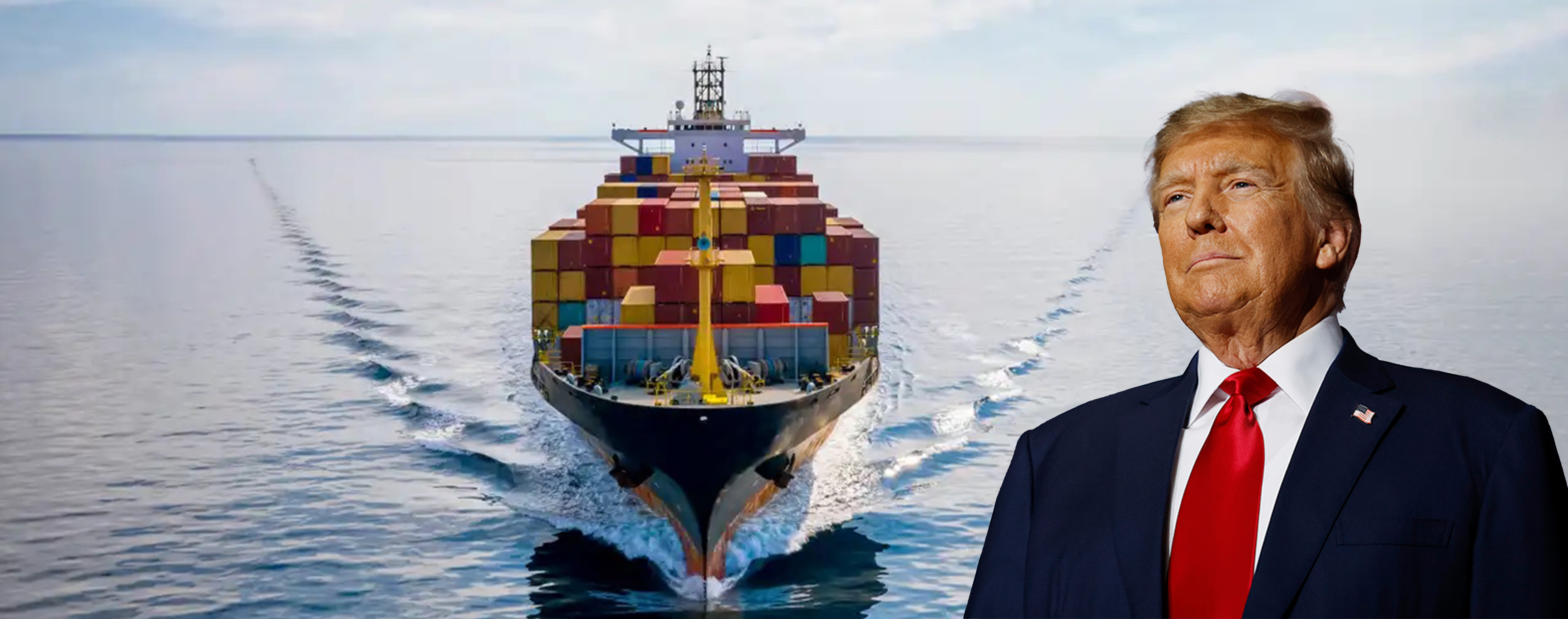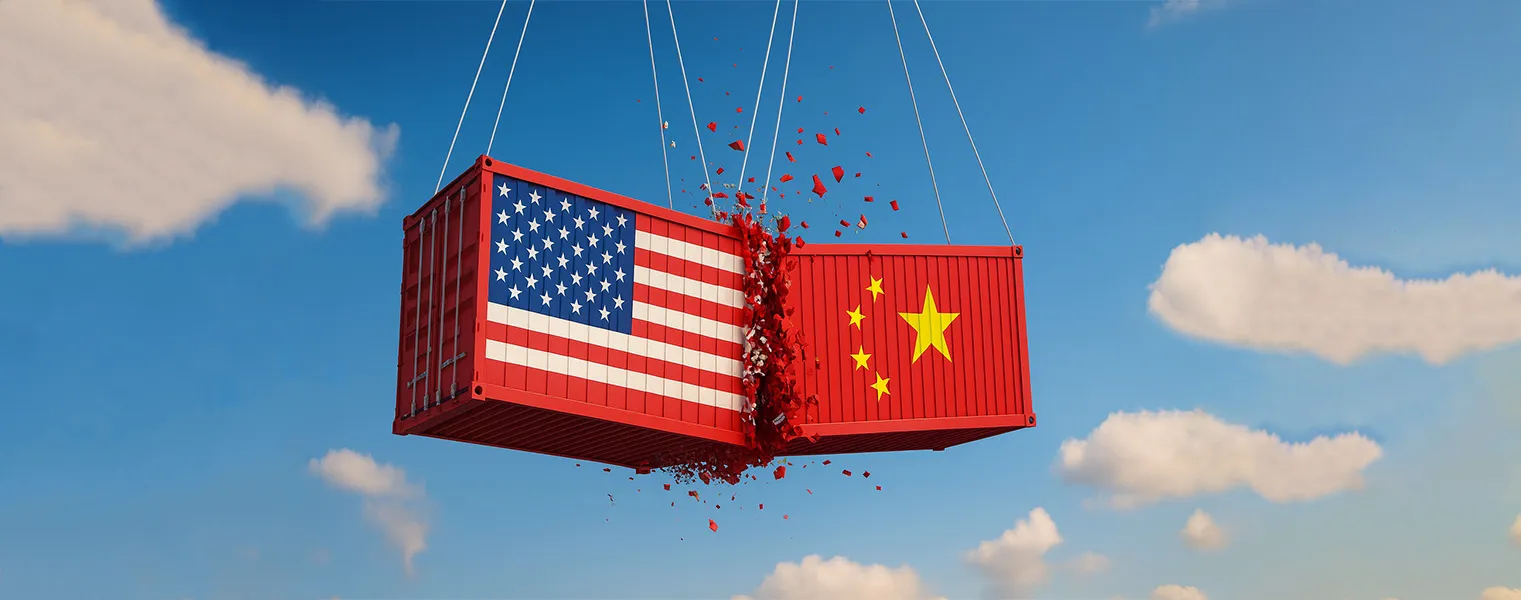Trump's Victory Sends Shockwaves Through Global Trade: What It Means for the Maritime and Freight Industries in the UAE and Beyond
Introduction
The recent re-election of Donald Trump as President of the United States has stirred global economic waters, with ripple effects anticipated to impact global maritime trade, logistics, and freight costs. Analysts warn of a potentially transformative period ahead, marked by a return to aggressive tariff policies and a renewed U.S.-China trade conflict. For the UAE, a pivotal trade hub, these changes may shape everything from port activity to freight rates, potentially altering established trade dynamics within the region and globally.

Trump's Trade Agenda: A Second Wave of Protectionism
President Trump has been vocal about prioritizing American manufacturing, pushing for increased tariffs on foreign imports. His victory speech reaffirmed intentions to impose blanket tariffs ranging from 10% to 20% on all imports to the U.S. and up to 100% on imports from China. This strategy echoes Trump’s previous policies, which dramatically impacted trade flows, particularly in the maritime sector. The ramifications of such tariffs could strain U.S.-Middle Eastern trade relations, posing unique challenges for UAE exporters dependent on seamless access to the American market.
Implications for UAE’s Role in Global Maritime Trade
The UAE, as a key trading center connecting Asia, Europe, and Africa, could see shifts in trade dynamics as companies search for alternatives to U.S.-bound trade or reconfigure their supply chains to mitigate tariff impacts. New tariffs are expected to drive U.S. businesses to diversify imports away from China, potentially increasing demand for alternative sourcing from other Asian countries, and creating opportunities for UAE ports to serve as key transit points in this evolving supply chain.

Rising Freight Rates and Preemptive Import Strategies
Historically, tariffs have triggered front-loading behaviors, with importers rushing to stockpile goods before new tariffs take effect. Similar actions are anticipated this time, as companies look to avoid the steep costs of a potential 100% tariff on Chinese imports. Already, reports indicate a spike in demand for freight services as importers advance their shipping schedules, a trend that could hike freight rates globally. For UAE exporters and importers, this could mean steeper shipping costs in the coming months and an increase in freight demand.
Quick Tip for Traders: UAE businesses exporting to the U.S. may consider front-loading shipments to secure current freight rates, as the anticipated increase in demand is likely to push costs higher by early 2025.
Container Shipping Disruption Looms
According to Drewry's analysis, Trump's policies may disrupt container shipping markets further. New tariffs could lead to reduced consumer demand for imported goods in the U.S., especially from China, impacting container shipping volumes. With ocean rates having spiked over 70% during the last tariff implementation, businesses should prepare for similar increases, particularly on routes linking Asia to the United States.
Strategic Insight: UAE importers should diversify shipping routes and suppliers, focusing on cost-effective options within Asia to avoid reliance on increasingly expensive China-U.S. routes. Diversification to Vietnam, India, and other countries may help mitigate cost pressures.
Potential Impact on Port Activities and UAE’s Competitive Position
With Trump’s return, maritime companies in the UAE are bracing for a potential reordering of global shipping routes and costs. As the U.S. shifts focus toward reshoring and strengthening domestic industries, the UAE's strategic ports might benefit from increasing demands for diversified trade lanes. Reduced dependence on Chinese imports could shift the flow of goods through UAE ports as alternative routes grow in popularity. The UAE's advanced logistics infrastructure and tax benefits position it well to serve as a supply chain bridge for companies needing to reroute through the Middle East.

Shift in Chinese Imports and Alternative Sourcing
Data from Trade Data Monitor reveals that China’s share of the U.S. import market has dropped from 40% to 27% since 2016, indicating an ongoing diversification of sourcing locations. For UAE-based importers and exporters, this trend opens avenues for new trading partnerships within Asia, which could reduce dependency on Chinese products and lessen exposure to U.S.-China trade friction.
Rising Operational Costs: A Challenge for Global Trade Hubs
The financial ripple effect of U.S. tariff policies may result in higher costs across logistics and storage sectors. Increased warehousing demands in anticipation of tariff hikes could add pressure to facilities in UAE free zones and raise operational costs for UAE-based freight companies and exporters. With the possibility of further strikes at U.S. ports and Lunar New Year congestion, a surge in demand may complicate freight logistics for exporters relying on timely delivery schedules.
Tip for Logistics Partners in UAE: Anticipate and manage increased warehousing demand, and optimize storage capacities to accommodate early shipments as supply chains adjust to changing tariffs.

European and Asian Markets Respond to Trade Tensions
European and Asian shipping stocks reacted strongly to Trump's win, with shares of major players like Maersk and HMM Co. declining due to fears of reduced U.S.-China trade volumes. This downward trend underscores the global apprehension surrounding Trump’s tariffs and the expected reduction in international shipping demand. For UAE-based traders and maritime stakeholders, this shift presents a critical moment to monitor global stock trends and shipping data, adapting strategies to maintain resilience against sudden price fluctuations.
Risk of Retaliation from Trading Partners
The European Union and China may react to Trump’s tariffs with retaliatory measures. For the UAE, which enjoys strong trading relations with both regions, such actions could lead to temporary disruptions, influencing both export prices and the availability of imports. Proactive engagement with diversified markets can offer UAE exporters a buffer against such volatility, ensuring continuity in international trade flow despite potential trade wars.

Conclusion: Navigating an Uncertain Trade Environment
As global trade braces for another period of uncertainty under President Trump, the UAE’s strategic maritime position may offer some insulation from direct impacts while presenting growth opportunities through diversified supply chains. However, UAE traders should prepare for significant challenges, including fluctuating freight rates, increased operational costs, and potential retaliatory tariffs in response to U.S. policies. By maintaining flexibility and proactively managing logistics, UAE-based companies can navigate this volatile period and secure a competitive edge.
Optimized FAQs
How will Trump’s new tariffs affect UAE maritime trade?
The new tariffs are expected to disrupt global trade routes, potentially increasing freight costs and demand for non-U.S.-China trade lanes. UAE ports may benefit as companies seek alternative shipping routes.
Why are freight rates expected to increase under Trump’s administration?
Historical trends indicate that tariffs lead to front-loading and heightened demand for shipping services, causing freight rates to rise as companies rush to import goods before tariffs take effect.
How can UAE businesses prepare for higher tariffs on U.S. imports?
UAE businesses should consider front-loading shipments, diversifying suppliers, and increasing warehousing capacities to mitigate costs associated with tariffs and fluctuating freight rates.
Will the UAE see increased trade with non-U.S. countries?
Yes, as the U.S. diversifies away from China, there’s potential for increased demand in UAE ports from Asian countries seeking new markets, solidifying the UAE’s role as a trade gateway.
What strategies can UAE traders use to handle rising operational costs?
Traders can negotiate long-term contracts with suppliers, increase their warehousing capabilities, and collaborate with logistics partners to lock in favorable rates, reducing exposure to sudden price hikes.
What impact will Trump’s tariffs have on container shipping rates to the U.S.?
Tariffs could cause container shipping rates to the U.S. to spike due to increased demand and the strategic repositioning of supply chains, making alternative trade routes through the UAE more valuable.









